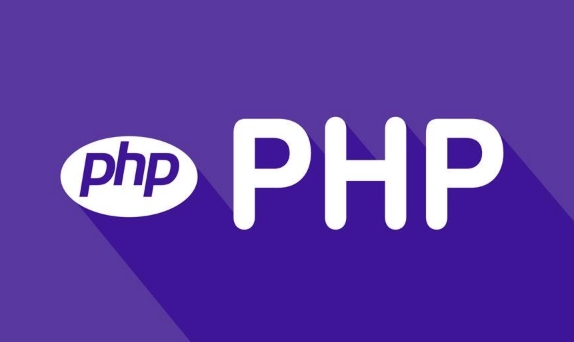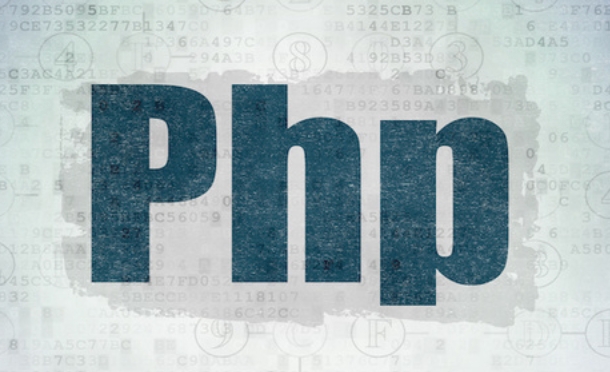Quick PHP Installation Tutorial
To install PHP quickly, use XAMPP on Windows or Homebrew on macOS. 1. On Windows, download and install XAMPP, select components, start Apache, and place files in htdocs. 2. Alternatively, manually install PHP from php.net and set up a server like Apache. 3. On macOS, install Homebrew, then run 'brew install php', verify with 'php -v', and configure Apache or use 'php -S localhost:8000'. 4. Configure PHP by editing php.ini to adjust errors, reporting, upload limits, and timezone, then restart the server.

If you're looking to get PHP up and running quickly, the good news is that installing PHP doesn't have to be complicated. Whether you're setting it up for local development or preparing a live server, the process can be straightforward as long as you follow the right steps.

Install PHP on Windows
For most Windows users, especially those just starting out, using a tool like XAMPP makes things much easier. It bundles PHP, Apache, MySQL, and other tools into one installer, saving you from having to configure everything separately.
- Download XAMPP from the official Apache Friends website
- Run the installer and choose the components you need (PHP is included by default)
- Once installed, start Apache from the XAMPP control panel
- Place your PHP files in the
htdocsfolder to run them locally
Alternatively, if you prefer a more manual approach, you can download the PHP binaries directly from php.net and add them to your system PATH. Just make sure you also install a web server like Apache or Nginx if you go this route.

Install PHP on macOS
macOS comes with PHP pre-installed in some versions, but it’s usually outdated. To get a newer version, Homebrew is your best bet.
Start by installing Homebrew if you haven’t already:

/bin/bash -c "$(curl -fsSL https://raw.githubusercontent.com/Homebrew/install/HEAD/install.sh)"
Then install PHP:
brew install php
This installs the latest stable version of PHP along with common extensions. You can check your installation by typing:
php -v
If you're using the built-in Apache server, you’ll need to update the Apache config file to use the new PHP module. Or you can run a lightweight dev server with:
php -S localhost:8000
Basic PHP Configuration Tips
Once PHP is installed, there are a few configuration changes you'll probably want to make depending on your use case. The main configuration file is php.ini. Here's where you'll find it:
- In XAMPP:
C:\xampp\php\php.ini - On macOS/Linux with Homebrew: usually located at
/etc/php/{version}/cli/php.inior similar
Common settings to adjust:
-
display_errors = Off→ set toOnduring development -
error_reporting = E_ALL→ helpful for catching issues early -
upload_max_filesizeandpost_max_size→ increase if you're handling large file uploads -
date.timezone→ set your timezone to avoid warnings
After making changes, restart your web server so they take effect.
That's basically all you need to know for a quick PHP setup. Whether you're on Windows, macOS, or even Linux, getting PHP installed and configured isn’t too hard once you know which tools to use.
The above is the detailed content of Quick PHP Installation Tutorial. For more information, please follow other related articles on the PHP Chinese website!

Hot AI Tools

Undress AI Tool
Undress images for free

Undresser.AI Undress
AI-powered app for creating realistic nude photos

AI Clothes Remover
Online AI tool for removing clothes from photos.

Clothoff.io
AI clothes remover

Video Face Swap
Swap faces in any video effortlessly with our completely free AI face swap tool!

Hot Article

Hot Tools

Notepad++7.3.1
Easy-to-use and free code editor

SublimeText3 Chinese version
Chinese version, very easy to use

Zend Studio 13.0.1
Powerful PHP integrated development environment

Dreamweaver CS6
Visual web development tools

SublimeText3 Mac version
God-level code editing software (SublimeText3)

Hot Topics
 A Simple Guide to PHP Setup
Jul 18, 2025 am 04:25 AM
A Simple Guide to PHP Setup
Jul 18, 2025 am 04:25 AM
The key to setting up PHP is to clarify the installation method, configure php.ini, connect to the web server and enable necessary extensions. 1. Install PHP: Use apt for Linux, Homebrew for Mac, and XAMPP recommended for Windows; 2. Configure php.ini: Adjust error reports, upload restrictions, etc. and restart the server; 3. Use web server: Apache uses mod_php, Nginx uses PHP-FPM; 4. Install commonly used extensions: such as mysqli, json, mbstring, etc. to support full functions.
 Quick PHP Installation Tutorial
Jul 18, 2025 am 04:52 AM
Quick PHP Installation Tutorial
Jul 18, 2025 am 04:52 AM
ToinstallPHPquickly,useXAMPPonWindowsorHomebrewonmacOS.1.OnWindows,downloadandinstallXAMPP,selectcomponents,startApache,andplacefilesinhtdocs.2.Alternatively,manuallyinstallPHPfromphp.netandsetupaserverlikeApache.3.OnmacOS,installHomebrew,thenrun'bre
 Commenting Out Code in PHP
Jul 18, 2025 am 04:57 AM
Commenting Out Code in PHP
Jul 18, 2025 am 04:57 AM
There are three common methods for PHP comment code: 1. Use // or # to block one line of code, and it is recommended to use //; 2. Use /.../ to wrap code blocks with multiple lines, which cannot be nested but can be crossed; 3. Combination skills comments such as using /if(){}/ to control logic blocks, or to improve efficiency with editor shortcut keys, you should pay attention to closing symbols and avoid nesting when using them.
 Tips for Writing PHP Comments
Jul 18, 2025 am 04:51 AM
Tips for Writing PHP Comments
Jul 18, 2025 am 04:51 AM
The key to writing PHP comments is to clarify the purpose and specifications. Comments should explain "why" rather than "what was done", avoiding redundancy or too simplicity. 1. Use a unified format, such as docblock (/*/) for class and method descriptions to improve readability and tool compatibility; 2. Emphasize the reasons behind the logic, such as why JS jumps need to be output manually; 3. Add an overview description before complex code, describe the process in steps, and help understand the overall idea; 4. Use TODO and FIXME rationally to mark to-do items and problems to facilitate subsequent tracking and collaboration. Good annotations can reduce communication costs and improve code maintenance efficiency.
 Learning PHP: A Beginner's Guide
Jul 18, 2025 am 04:54 AM
Learning PHP: A Beginner's Guide
Jul 18, 2025 am 04:54 AM
TolearnPHPeffectively,startbysettingupalocalserverenvironmentusingtoolslikeXAMPPandacodeeditorlikeVSCode.1)InstallXAMPPforApache,MySQL,andPHP.2)Useacodeeditorforsyntaxsupport.3)TestyoursetupwithasimplePHPfile.Next,learnPHPbasicsincludingvariables,ech
 Writing Effective PHP Comments
Jul 18, 2025 am 04:44 AM
Writing Effective PHP Comments
Jul 18, 2025 am 04:44 AM
Comments cannot be careless because they want to explain the reasons for the existence of the code rather than the functions, such as compatibility with old interfaces or third-party restrictions, otherwise people who read the code can only rely on guessing. The areas that must be commented include complex conditional judgments, special error handling logic, and temporary bypass restrictions. A more practical way to write comments is to select single-line comments or block comments based on the scene. Use document block comments to explain parameters and return values at the beginning of functions, classes, and files, and keep comments updated. For complex logic, you can add a line to the previous one to summarize the overall intention. At the same time, do not use comments to seal code, but use version control tools.
 Improving Readability with Comments
Jul 18, 2025 am 04:46 AM
Improving Readability with Comments
Jul 18, 2025 am 04:46 AM
The key to writing good comments is to explain "why" rather than just "what was done" to improve the readability of the code. 1. Comments should explain logical reasons, such as considerations behind value selection or processing; 2. Use paragraph annotations for complex logic to summarize the overall idea of functions or algorithms; 3. Regularly maintain comments to ensure consistency with the code, avoid misleading, and delete outdated content if necessary; 4. Synchronously check comments when reviewing the code, and record public logic through documents to reduce the burden of code comments.
 Mastering PHP Block Comments
Jul 18, 2025 am 04:35 AM
Mastering PHP Block Comments
Jul 18, 2025 am 04:35 AM
PHPblockcommentsareusefulforwritingmulti-lineexplanations,temporarilydisablingcode,andgeneratingdocumentation.Theyshouldnotbenestedorleftunclosed.BlockcommentshelpindocumentingfunctionswithPHPDoc,whichtoolslikePhpStormuseforauto-completionanderrorche







